






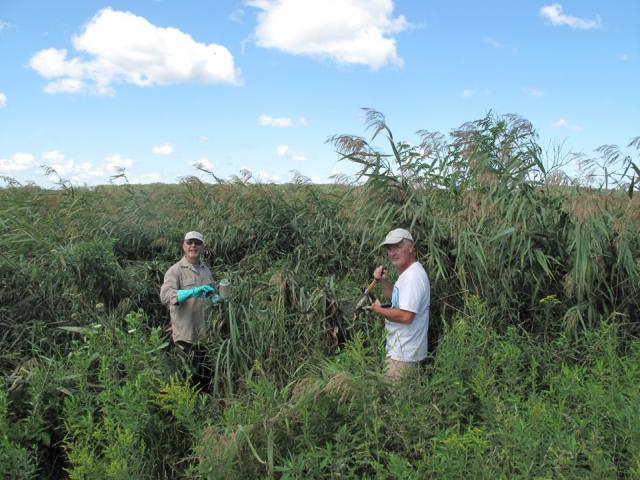 Volunteers Jim Hughes and Tim Nelson remove invasive giant reed grass from Cherokee Marsh wetlands (Photo by Janet Battista)
Volunteers Jim Hughes and Tim Nelson remove invasive giant reed grass from Cherokee Marsh wetlands (Photo by Janet Battista)
In an effort to manage and maintain the undeveloped land areas of the Madison park system, the city’s Parks and Engineering divisions recently initiated a citywide inventory.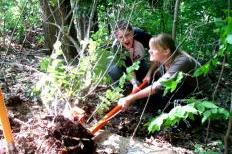
Simon Widstrand, a retired conservation supervisor and planner for the City of Madison Parks Division, is working with other volunteers and city staff to inventory Madison's 4,000 acres of natural land to apply standard maintenance practices and prevent these areas from deteriorating or being overrun by invasive species.
“Most people embrace a land ethic that requires us to care for our land. To leave something for future generations and to protect our investment, we should provide good stewardship of our natural lands,” Widstrand said. “The inventory is the first step of developing a plan for the city and volunteers to manage and restore more city natural areas.”
He estimates about 800 volunteer hours per year are needed to monitor all of the natural areas. Volunteers have been asked to select parks to inventory while marking off woodland, meadow and wetland areas on a map and writing observations about invasive species in those areas.
However, due to lack of staff and coordination, it will need to be a collaborative effort.
“The city does not have enough staff and resources to manage all city properties and it never will, so it will have to be done with a partnership of public, private and volunteer efforts,” Widstrand said.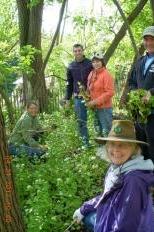 Volunteers pulling garlic mustard in woods along the Southwest Bike Path (Courtesy Simon Widstrand)
Volunteers pulling garlic mustard in woods along the Southwest Bike Path (Courtesy Simon Widstrand)
Sandy Stark, a council committee chair for the Dudgeon-Monroe Neighborhood Association, added, “As downtown areas change and neighborhoods grow and budgets shrink, it’s a challenge to preserve parks and shared green spaces, so coordinating where and how to use volunteers in these areas is really important to getting more done.”
About 3,000 out of the 4,000 acres have been previously inventoried, but Widstrand estimates that about half of the land receives no management to protect the habitat.
Without management, invasive species such as Norway maple trees and buckthorn shrubs have been infiltrating many natural areas and preventing native wildlife from flourishing.
“The trees, shrubs, flowers and grasses that are native to the Madison area are beautiful,” Jan Axelson, president of Friends of Cherokee Marsh, said. “But a number of aggressive, mostly non-native species have the ability to out-compete the native plants and form monocultures that are of little use to wildlife.”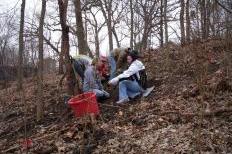 Volunteers removing invasives and planting native shrubs at Glenwood Children's Park. (Photo by Sandy Stark
Volunteers removing invasives and planting native shrubs at Glenwood Children's Park. (Photo by Sandy Stark
According to Axelson, Cherokee Marsh Conservation Park has removed dense thickets of buckthorn and honeysuckle shrubs in the woods to allow for a more diverse and interesting understory of native wildflowers and grasses.
While Widstrand isn’t expecting the areas to be fully restored, he hopes that new invasive outbreaks can be caught before they spread.
At a Friends of Hoyt Park meeting in late 2011, Widstrand explained the need for an inventory. “[The goal] is not proposing to restore all 4,000 acres to diverse, high quality vegetation, but it does preserve the option to do that with some areas in the future,” he said.
But the complexity of gathering all the information from this project can become overwhelming.
“Plant communities can be complex, and gathering information and managing 400 different properties compounds the complexity,” Widstrand said. “We're trying to keep it simple, look at the big picture and identify areas where actions…can be most effective.”
Despite the obstacles, Axelson remains optimistic about the completion of this project.
“If residents are inspired to care for natural areas as a result of the project, the project will be a success,” Axelson said.
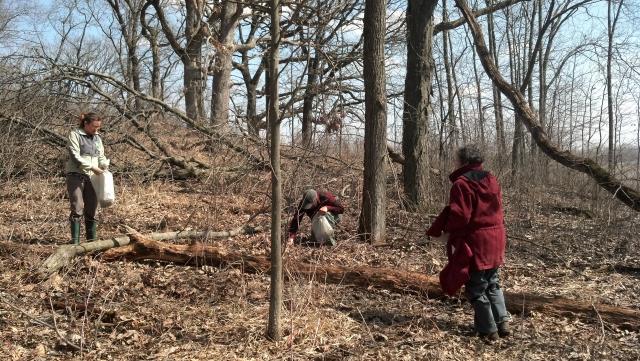 Volunteers from the Madison Area Weed Warriors and the Friends of Cherokee Marsh pull garlic mustard at Cherokee Marsh Conservation Park (Photo by Jan Axelson)
Volunteers from the Madison Area Weed Warriors and the Friends of Cherokee Marsh pull garlic mustard at Cherokee Marsh Conservation Park (Photo by Jan Axelson)
|
|
|
Welcome to the Madison Commons, a website designed to provide news and information about all of Madison's neighborhoods and a crossroads for the discussion of community issues. The name comes from the idea of a village commons, a place for news, talk, debate, and some entertainment, too, that's open to everyone.
All rights reserved. Read more about the Madison Commons and its partners.

